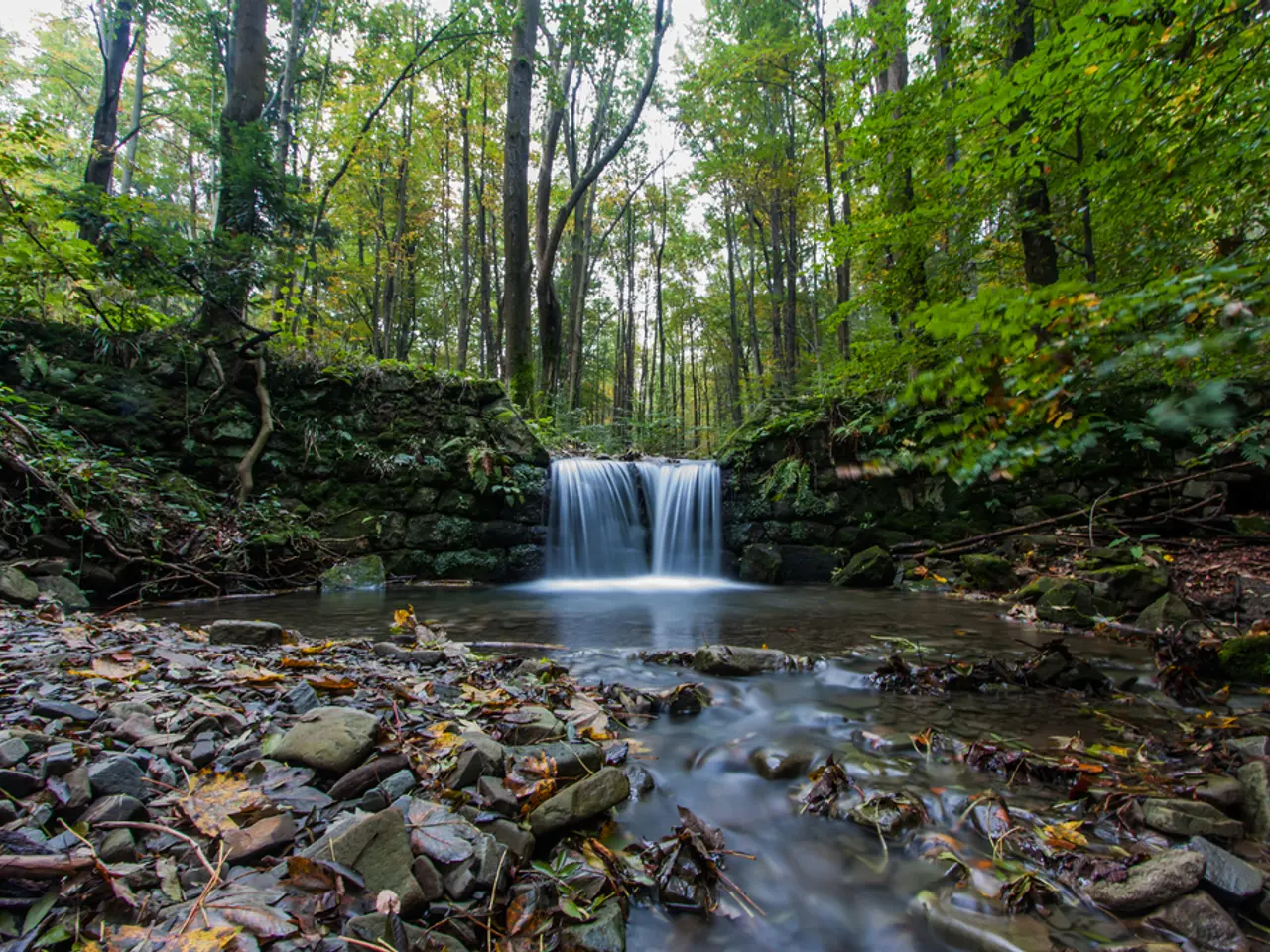Pupils Aid in Revitalizing the Oruarangi Stream's Native Spirit
Restoring the Oruarangi Stream: A Community-Led Ecosystem Restoration Project
In Auckland, New Zealand, a unique initiative called the "Participatory Science Platform project restoring Oruarangi Stream ecosystem" is making strides in ecological restoration and community engagement. The Oruarangi Stream, historically significant to local iwi and connected to Auckland's oldest settlement, has faced the challenges of urbanization, pollution, and habitat degradation.
The project, launched in 2015, involves students from Aorere College, Makaurau Marae, Wai Care, NIWA, and Ngā Pae o te Māramatanga, with the aim of restoring mauri (life force or essence) to the Oruarangi Stream. Funded by the South Auckland pilot of the Curious Minds initiative, managed by COMET Auckland (Community Education Trust Auckland), and part of the Ministry of Business, Innovation and Employment's Participatory Science Platform (PSP), this project is a testament to collaborative efforts in environmental conservation.
Key activities of the project include monitoring water quality, biodiversity surveys, habitat restoration, community engagement and education, and data sharing. Community volunteers and students collect data on water parameters like pH, turbidity, nitrates, and phosphates. They also record the presence of native fish, invertebrates, birds, and plant species to assess ecosystem health. Habitat restoration involves planting native riparian vegetation to stabilize banks, improve habitat quality, and reduce sediment run-off.
Workshops, field trips, and citizen science training sessions build local stewardship, while collected data is shared via the PSP platform to inform management decisions and raise awareness. The project focuses on water-quality monitoring, species diversity, and ecosystem improvement.
Macroinvertebrates, such as mayflies and caddisflies, are used to assess water quality in most aquatic environments, as they are sensitive to physical and chemical changes to their habitat. These organisms are part of aquatic food webs that include larger species like eels, fish, and birds. Changes to a stream's substrate will affect the ecosystem it supports, with soft-bottomed, muddy streams often supporting a slower flow and more plants.
Possible outcomes and benefits of the project include improved water quality, enhanced habitat connectivity, empowered community, informed policy, and educational impact. By reducing pollutants and sediment inputs due to revegetation and better land use practices, the project aims to improve water quality. The reintroduction or protection of native flora and fauna will lead to increased biodiversity, enhancing habitat connectivity.
The project fosters stronger local involvement and environmental stewardship among residents and students, empowering the community. Data collected helps council and environmental groups develop better restoration and management plans, informing policy. Hands-on learning experiences for schools increase knowledge of local ecology and sustainability, providing an educational impact.
For more detailed results or data from the Oruarangi Stream project, such as scientific findings, participant numbers, or long-term monitoring reports, you may want to contact the local council environmental department, the Participatory Science Platform coordinators, or regional conservation organizations involved in the project.
- The participatory science project in Auckland, New Zealand, encompasses aspects of environmental-science and education-and-self-development, as it involves students from Aorere College in the restoration of Oruarangi Stream.
- The Oruarangi Stream restoration project, focused on home-and-garden through habitat restoration, also takes on a lifestyle dimension through its workshops and citizen science training sessions that promote local stewardship.
- In the learning process, participants of the Oruarangi Stream project gather data on various factors like water quality and biodiversity, thereby merging science, environmental-science, and learning.




